WNT5A promotes stemness characteristics in nasopharyngeal carcinoma cells leading to metastasis and tumorigenesis
- PMID: 25823923
- PMCID: PMC4496352
- DOI: 10.18632/oncotarget.3518
WNT5A promotes stemness characteristics in nasopharyngeal carcinoma cells leading to metastasis and tumorigenesis
Abstract
Nasopharyngeal carcinoma (NPC) has the highest metastasis rate among head and neck cancers with unclear mechanism. WNT5A belongs to the WNT family of cysteine-rich secreted glycoproteins. Our previous high-throughput gene expression profiling revealed that WNT5A was up-regulated in highly metastatic cells. In the present study, we first confirmed the elevated expression of WNT5A in metastatic NPC tissues at both the mRNA and protein levels. We then found that WNT5A promoted epithelial-mesenchymal transition (EMT) in NPC cells, induced the accumulation of CD24-CD44+ cells and side population, which are believed to be cancer stem cell characteristics. Moreover, WNT5A promoted the migration and invasion of NPC cells in vitro, while in vivo treatment with recombinant WNT5A promoted lung metastasis. Knocking down WNT5A diminished NPC tumorigenesis in vivo. When elevated expression of WNT5A coincided with the elevated expression of vimentin in the primary NPC, the patients had a poorer prognosis. Among major signaling pathways, protein kinase C (PKC) signaling was activated by WNT5A in NPC cells. A positive feedback loop between WNT5A and phospho-PKC to promote EMT was also revealed. Taken together, these data suggest that WNT5A is an important molecule in promoting stem cell characteristics in NPC, leading to tumorigenesis and metastasis.
Keywords: PKC; WNT5A; metastasis; nasopharyngeal carcinoma; tumorigenesis.
Conflict of interest statement
The author declares that the research was conducted in the absence of any commercial or financial relationships that could be construed as a potential conflict of interest.
Figures
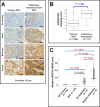
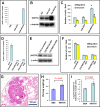
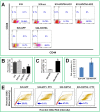
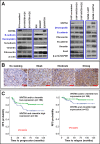
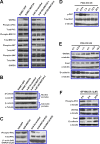

Similar articles
-
[Role of Wnt5a and LMP1 in the nasopharyngeal carcinogenesis by high-throughput tissue microarray technology].Zhong Nan Da Xue Xue Bao Yi Xue Ban. 2012 Sep;37(9):865-70. doi: 10.3969/j.issn.1672-7347.2012.09.001. Zhong Nan Da Xue Xue Bao Yi Xue Ban. 2012. PMID: 23000758 Chinese.
-
Effect of WNT5A on epithelial-mesenchymal transition and its correlation with tumor invasion and metastasis in nasopharyngeal carcinoma.Asian Pac J Trop Med. 2014 Jun;7(6):488-91. doi: 10.1016/S1995-7645(14)60080-8. Asian Pac J Trop Med. 2014. PMID: 25066400
-
Hes1 triggers epithelial-mesenchymal transition (EMT)-like cellular marker alterations and promotes invasion and metastasis of nasopharyngeal carcinoma by activating the PTEN/AKT pathway.Oncotarget. 2015 Nov 3;6(34):36713-30. doi: 10.18632/oncotarget.5457. Oncotarget. 2015. PMID: 26452025 Free PMC article.
-
WNT5A in tumor development and progression: A comprehensive review.Biomed Pharmacother. 2022 Nov;155:113599. doi: 10.1016/j.biopha.2022.113599. Epub 2022 Sep 9. Biomed Pharmacother. 2022. PMID: 36089446 Review.
-
WNT5A as a therapeutic target in breast cancer.Cancer Metastasis Rev. 2018 Dec;37(4):767-778. doi: 10.1007/s10555-018-9760-y. Cancer Metastasis Rev. 2018. PMID: 30171384 Free PMC article. Review.
Cited by
-
Wnt5a-mediated autophagy promotes radiation resistance of nasopharyngeal carcinoma.J Cancer. 2022 Apr 24;13(7):2388-2396. doi: 10.7150/jca.71526. eCollection 2022. J Cancer. 2022. PMID: 35517407 Free PMC article.
-
Epstein-Barr virus stably confers an invasive phenotype to epithelial cells through reprogramming of the WNT pathway.Oncotarget. 2018 Jan 2;9(12):10417-10435. doi: 10.18632/oncotarget.23824. eCollection 2018 Feb 13. Oncotarget. 2018. PMID: 29535816 Free PMC article.
-
Anti-Cancer Phytometabolites Targeting Cancer Stem Cells.Curr Genomics. 2017 Apr;18(2):156-174. doi: 10.2174/1389202917666160803162309. Curr Genomics. 2017. PMID: 28367074 Free PMC article. Review.
-
Deficiency of pigment epithelium-derived factor in nasopharyngeal carcinoma cells triggers the epithelial-mesenchymal transition and metastasis.Cell Death Dis. 2017 Jun 1;8(6):e2838. doi: 10.1038/cddis.2017.114. Cell Death Dis. 2017. PMID: 28569772 Free PMC article.
-
Kinesin superfamily protein Kif26b links Wnt5a-Ror signaling to the control of cell and tissue behaviors in vertebrates.Elife. 2017 Sep 8;6:e26509. doi: 10.7554/eLife.26509. Elife. 2017. PMID: 28885975 Free PMC article.
References
-
- Lee AW, Law SC, Foo W, Poon YF, Cheung FK, Chan DK, Tung SY, Thaw M, Ho JH. Retrospective analysis of patients with nasopharyngeal carcinoma treated during 1976-1985: survival after local recurrence. Int J Radiat Oncol Biol Phys. 1993;26(5):773–782. - PubMed
Publication types
MeSH terms
Substances
LinkOut - more resources
Full Text Sources
Other Literature Sources
Miscellaneous

